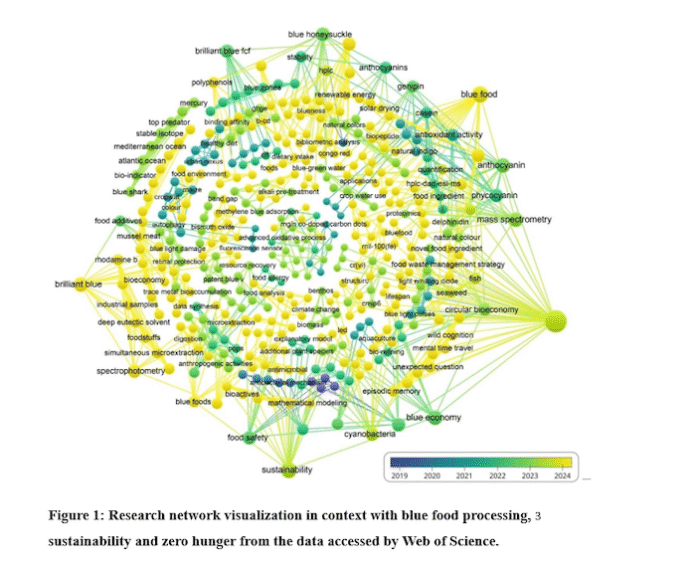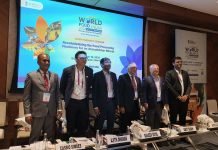
The Research and Development Cell of the Biotechnology Department at Manav Rachna International Institute of Research and Studies has announced a significant scholarly contribution addressing global food security and sustainability. In a research paper titled “Exploring the significance of emerging blue food processing technologies for sustainable development,” Vinay Kumar Pandey presents a comprehensive review of breakthrough approaches to improve blue food processing systems. The study emphasizes the evolution, comparison, and potential of cutting-edge technologies aimed at transforming the sector.
Blue food processing applies to the production and processing of fish, algae, and other aquatic organisms for human consumption. These aquatic sources are increasingly critical to meeting the nutritional needs of a rapidly growing global population. However, existing methods such as conventional fishing and aquaculture are neither scalable nor environmentally sustainable. The research emphasizes the urgent need for transformative technologies that ensure both food security and ecosystem protection.
As the global population grows and consumer demand for protein-rich foods increases, there is increased interest in exploring a wide range of innovative approaches for processing blue foods in ways that improve the efficiency, sustainability, and nutritional quality of these products and reduce the environmental impact of their production.
The study identifies several emerging technologies that are revolutionizing blue food processing. These include high-pressure processing (HPP), freeze-drying, ultrasound-assisted extraction, pulsed electric fields (PEF), plasma technology, and microwave induction heating. These advanced techniques maintain food safety, improve nutritional retention, speed up production, and extend product shelf life while avoiding the need for environmentally damaging chemicals or excessive energy use.
“Innovations in blue food processing are unlocking new possibilities for year-round production with minimal ecological impact,” said Vinay Kumar, assistant professor, research and development cell of the Biotechnology Department, MRIIRS. “From recirculating aquaculture systems that drastically reduce water usage to blockchain ensuring complete traceability from ocean to table, the future of aquatic food is sustainable and smart.”
Technologies like Recirculating Aquaculture Systems (RAS) are proving particularly impactful. RAS operates by continuously filtering and reusing water within closed-loop tanks, lowering the environmental footprint while also controlling diseases without heavy reliance on antibiotics. Especially suitable for urban and inland aquaculture, RAS enables high-quality fish production throughout the year.
The research explores blue biotechnology, focusing on genetic modification of microalgae to enhance productivity and nutritional content, resulting in biofortified blue foods rich in omega-3s, amino acids, and antioxidants. It also highlights nanoemulsion technologies that improve nutrient bioavailability, stability, and shelf life, supporting the production of ready-to-eat blue food products.
While these technologies have vast global potential, challenges such as high capital costs, infrastructure gaps, and limited expertise remain, particularly in developing countries. The study calls for policy support, industry collaboration, and increased investment to overcome these barriers and accelerate the adoption of sustainable blue food solutions.
IndiFoodBev — authentic, impactful and influential
An English-language food and beverage processing and packaging industry B2B platform in print and web, IndiFoodBev is in its third year of publication. It is said that the Indian food and beverage industries represent approximately US$ 900 billion in revenues which implies more than 20% of the country’s GDP. Eliminating the wastage on the farmside can help to deliver more protein to a higher number of the population apart from generating sizable exports. The savings in soil, seeds, water, fertilizer, energy and ultimately food and nutrition could be the most immense contribution that country is poised to make to the moderation of climate change.
To improve your marketing and grow sales to the food and beverage processing and packaging industry, talk to us. Our research and consulting company IppStar [www.ippstar.org] can assess your potential and addressable markets in light of the competition. We can discuss marketing, communication, and sales strategies for market entry and growth.
Suppliers and service providers with a strategy and budget for targeted marketing can discuss using our hybrid print, web, video, and social media channels to create brand recognition linked to market relevance. Our technical writers are ready to meet you and your customers for content.
The second largest producer of fruit and vegetables in the world is continuously expanding processing capacities and delivery systems with appropriate innovative technologies. We cover product and consumer trends, nutrition, processing, research, equipment and packaging from farm to thali. Get our 2025 media kit and recalibrate your role in this dynamic market. Enhance your visibility and relevance to existing markets and turn potential customers into conversations. Ask for a sample copy of our bi-monthly in print or our weekly IndiFoodBev eZine each Wednesday.
For editorial info@ippgroup.in — for advertisement ads1@ippgroup.in and for subscriptions subscription@ippgroup.in
Naresh Khanna – 10 February 2025
Subscribe Now










